Beware of These 9 Points to Avoid Student Visa Rejection!
On March 23rd, changes were made to the student visa Genuine Temporary Entrant (GTE) assessment requirements, now known as Genuine Student (GS) assessment. And just three days later, on March 26th, the Migration Institute of Australia (MIA) held an expert briefing on the "New Genuine Student Assessment Requirements"! Let's dive in together to understand the legal changes and the 9 key points to tackle, so stay tuned till the end!
Before the reform, GTE assessment followed Direction 69. After the reform, GS will adhere to Direction 106!
Comparison of the two Directions is as follows:
Difference 1:
Regarding the applicant's circumstances in their home country, the factors considered remain the same. The new Direction assesses applicants for clear motivation in applying for a student visa as a means to enter Australia, not for the purpose of studying or accompanying another student visa holder to Australia.
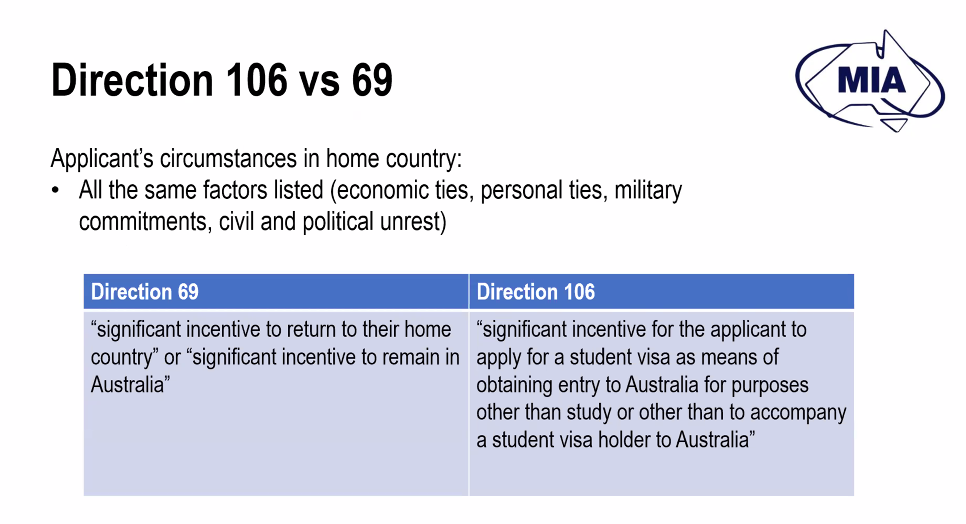
Difference 2:
Regarding potential situations applicants may face in Australia: The connection to Australia, including family and community ties that could motivate staying in Australia, has been removed. There are only minor changes in wording, for example "whether the visa is being used to maintain ongoing residency rather than for the purpose of study!"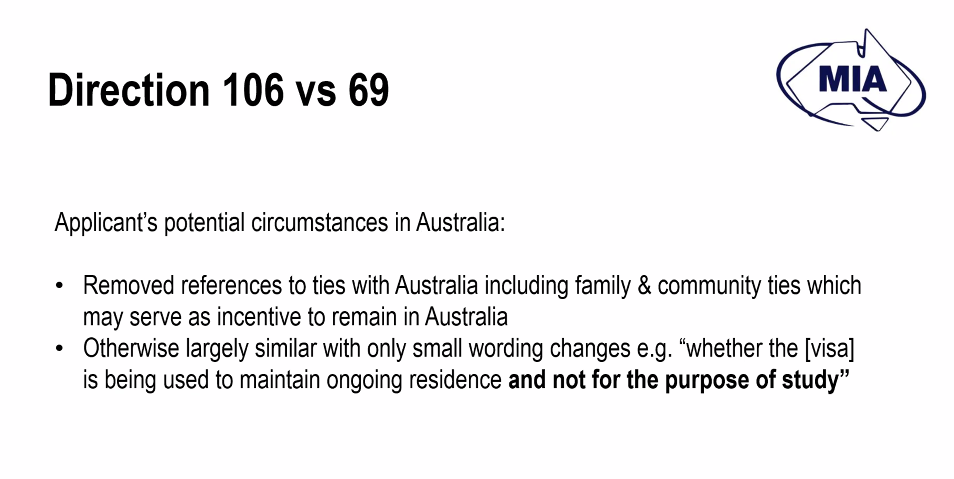
Difference 3:
Obtaining employment or improving employment prospects in their home country or other countries (here, "other countries" has been added, indicating that good employment prospects in other countries after completing studies can also be a strong reason).
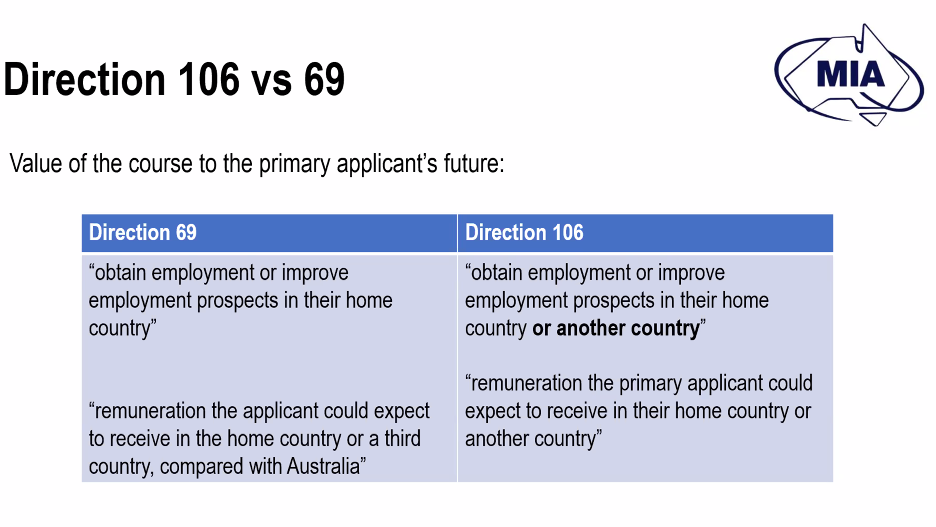
Difference 4:
Applicant's immigration record:
Reference to the applicant's time spent in Australia has been removed (staying in-country for over 10 years will not be a reason for rejection).
Reference to the applicant undertaking a series of short-term inexpensive courses or failing to successfully complete studies in-country has been removed (but please refer to below in this Direction).
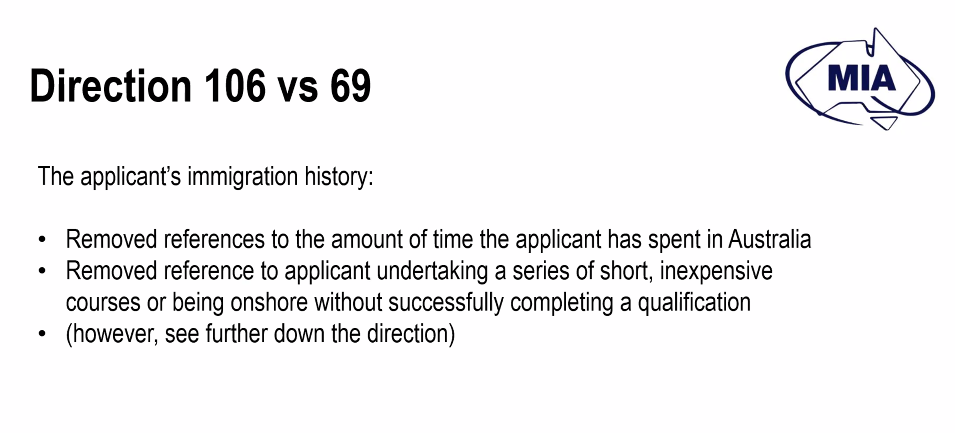
Difference 5:
Other relevant matters:
Previously unspecified.
Now:
Considering whether multiple course loads would make completing courses impossible/unlikely.
Considering past academic history, including level of engagement in courses, logical progression of courses, history of starting but not completing courses, study gaps, changes or deferments in courses, changes in education providers.
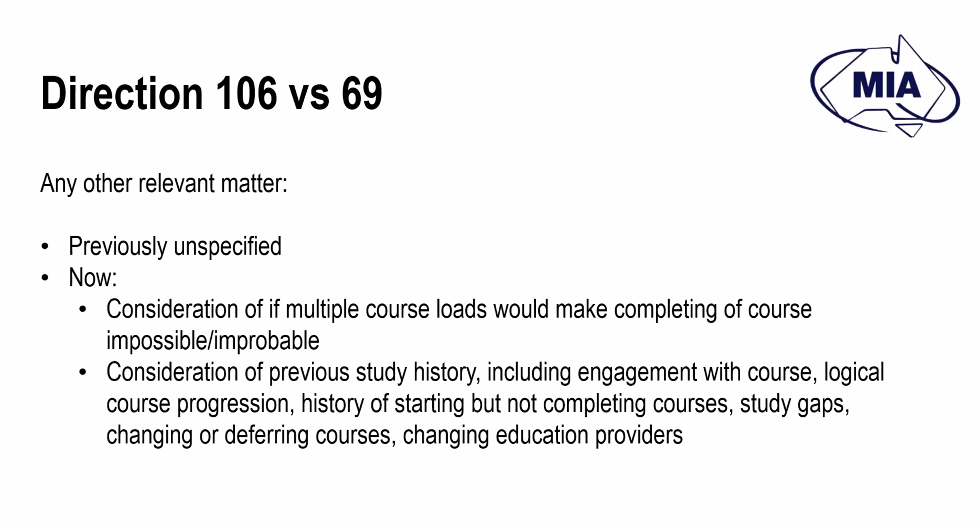
On the application form, the previous GTE statement section has been revised into more specific questions, with each question allowing for approximately 150 words in response. The specific question content is roughly similar to the above description, and students are required to respond based on their own circumstances.
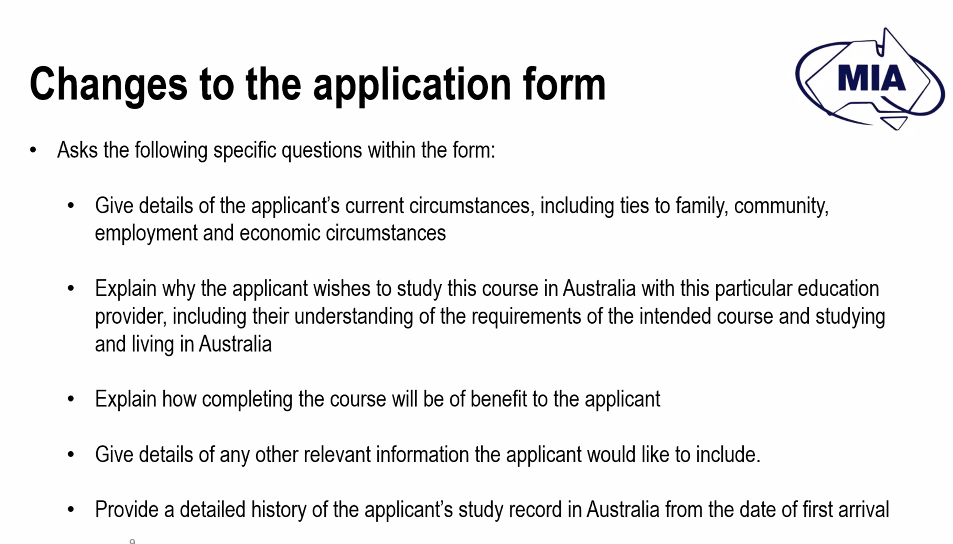
What does the reform mean?
1.There's no need to provide a GTE statement anymore; it will be replaced by information from the application form and supporting documents.
2.Dependent visa applicants will find it easier to obtain visas, but improper explanations could still lead to rejection.
3.There may be many rejections due to the economic situation in the applicant's home country. Experts suggest that if rejection is based on this factor, the chances of successful appeal are slim. Appeals may be possible for rejections based on other factors.
4.As long as applicants genuinely intend to study, seeking a new life in Australia won't result in negative outcomes.
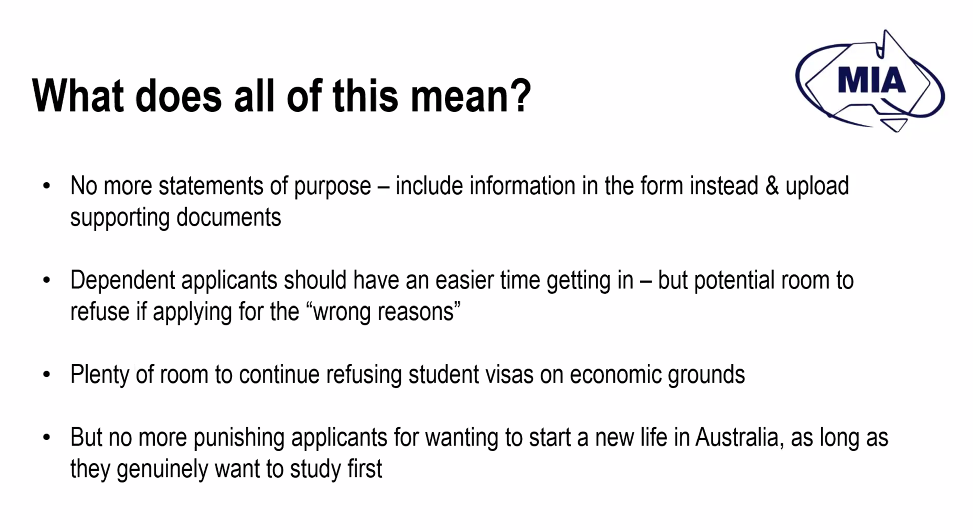 During the Q&A session, we've gathered 9 key points:
During the Q&A session, we've gathered 9 key points:
1.Answering questions on the application form eliminates the need for additional documents.
2.Having a job offer post-graduation can be beneficial.
3.There's little difference between applying for a student visa as an onshore visitor visa holder or make a student visa application directly from overseas; the assessment criteria are the same. Applying from within Australia just offers the advantage of appeal rights.
4.Visa applications for primary and secondary school students are minimally affected; it's difficult to argue that their intention isn't to study.
5.There's no need to separately apply step by step for accompanying dependents.
6.Emphasis on the genuineness of relationships for dependents; ample proof of relationship is crucial, and temporary residence in Australia is no longer a major issue.
7.Downgrading studies or changing majors unreasonably remains an issue.
8.The required amount for proof of funds for study remains unchanged.
9. The applicants who waiting for a visa decision has little impact.
In addition, parents' accompanying visas (subclass 590) still follow the old GTE system for assessment.
Regarding the age limit of 35 for the 485 visa, the rule hasn't been finalized, with various opinions. It seems the implementation of this new policy is challenging, which could be good news for many students.
Summary:
The immigration department doesn't reject international students with immigration intentions to study in Australia. However, they expect applicants to adhere to the purpose of the visa, which is genuinely for studying, completing their education, and enhancing their employment prospects. It's not about using a student visa for long-term work or achieving other purposes in Australia.








